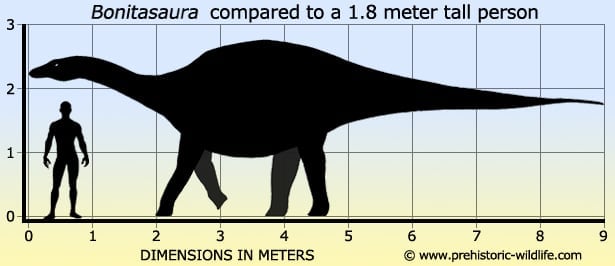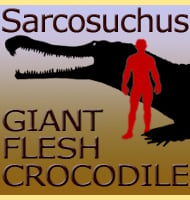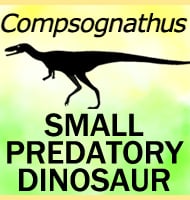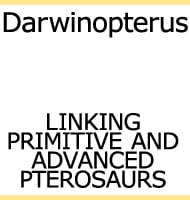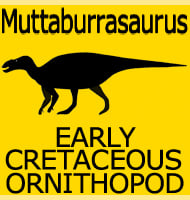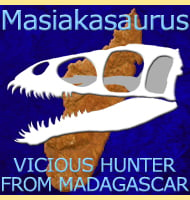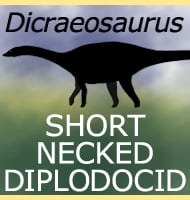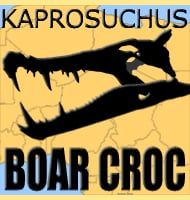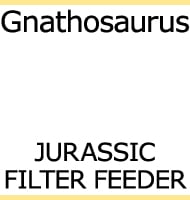In Depth
Bonitasaura is a genus of what seems to have been fairly small titanosaurs that lived in Argentina during the Late Cretaceous. The holotype individual seems to have been a subadult, which means that while it was sexually mature, it still would not have been fully grown. During this phase of its life though, actual body growth would have been expected to be slowing down, so adults of the type species might have been longer than nine meters though not by much. This is a stark contrast to another South American titanosaur named Argentinosaurus, which might be one of the largest titanosaurian sauropods of all time.
Bonitasaura seems to have had a fairly stocky build with a relatively short neck when compared to some other titanosaurs. The dorsal (back) vertebrae also had high and robust neural spines indicating a points for strong muscle attachments. This could indicate that while the neck was short, Bonitasaura were still high browsers that cropped mouthfuls of food from the tree canopy.
A surprising feature of Bonitasaura is that the lower jaw is actually more like that of a diplodocid, a type of sauropod that was quite different from titanosaurian sauropods. This lower jaw had teeth reduced in size towards the back while the front had a ridge that in life would have been covered by a growth of keratin. The upper jaw, missing at the time of description) would be expected to mirror this so that the front of the mouth had a kind of small beak that formed a shearing edge. Bonitasaura would feed by gripping parts of plants and trees by biting and holding with the teeth, and then using the beak to slice and remove them so that the mouthful could be swallowed. Sauropods are not noted for having very strong bite forces, but a more muscular neck as that seen in Bonitasaura may have provided the necessary strength to cut plants against the shearing beak.
The shape of the lower jaw also reveals that while the diplodocids seem to have largely disappeared by the late Cretaceous, the titanosaurs independently developed similar morphological features. This can also help explain the noted occurrence of other diplodocid like jaws found in association with titanosaurian skulls, as has been seen in another genus named Antarctosaurus.
Bonitasaura is named after the La Bonita Quarry where the holotype remains were found. Because Bonita is a feminine Spanish word, the genus name has been named as ‘saura’ which is also feminine as opposed to ‘saurus’ which would be masculine (both are Ancient Greek for lizard). The species named B. salgadoi is in honour of the Argentine palaeontologist Leonardo Salgado.
Further Reading
- Bonitasaura salgadoi gen. et sp. nov.: a beaked sauropod from the Late Cretaceous of Patagonia - Sebasti�n Apestegu�a - 2004. – Postcranial anatomy of Bonitasaura salgadoi (Sauropoda, Titanosauria) from the Late Cretaceous of Patagonia. – Journal of Vertebrate Paleontology 35. 1–22. – P. A. Gallina & S. Apestegu�a. – 2015.
